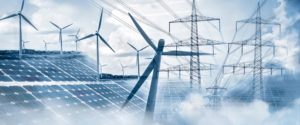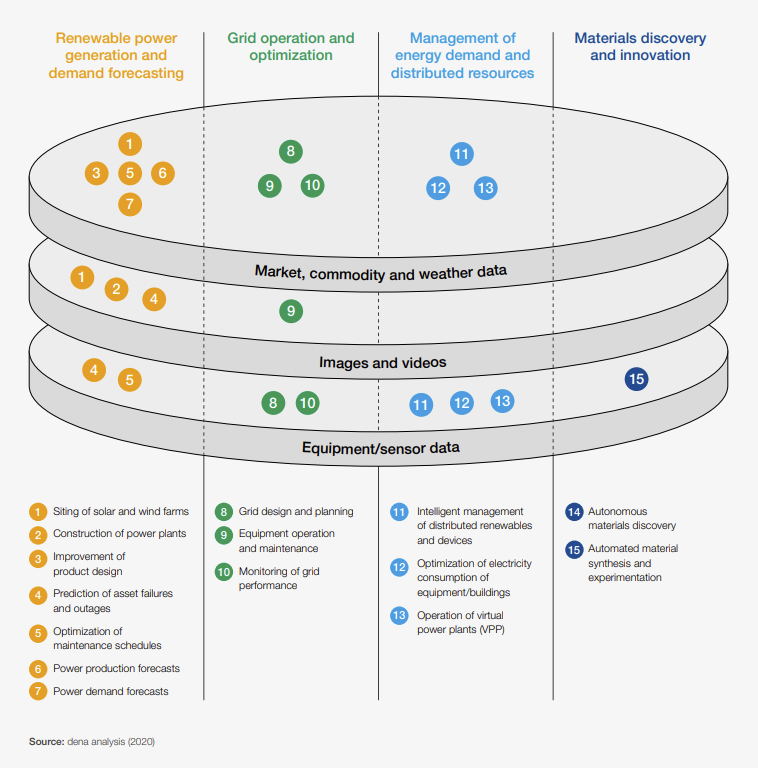
World Economic Forum Highlights AI’s Role in the Energy Transition

The COP26 climate conference, which ends on Friday, has been ongoing for the past two weeks, drawing climate change back into the spotlight as nations, organizations, and corporations struggle to make meaningful progress on climate change mitigation and adaptation. And with the timeline to ameliorate the impacts of climate change quickly tightening, many are hoping that rapid technological development can help to accelerate the transition to a low-carbon economy. To that end, the World Economic Forum has released a new white paper to coincide with COP26: Harnessing Artificial Intelligence to Accelerate the Energy Transition.
The paper – compiled by researchers from BloombergNEF, the German Energy Agency, and the World Economic Forum (WEF) – is a synopsis of a series of roundtables that ran from March to May of this year. Those roundtables incorporated experts from the energy and AI sectors, including representatives from companies like Hitachi, IBM, Microsoft, and GE. The compilation presents important AI applications for accelerating the energy transition; a set of nine principles for that transition; and recommended actions for key stakeholders.
But before all that, the researchers address why AI is necessary for the transition. “To reach the commitments made under the 2015 Paris Agreement – limiting the global temperature rise to well below 2°C – this transition must accelerate,” they write. “In recent years, the energy sector has become increasingly digital and it is clear that further digitalization will be a key feature of the energy transition and an essential driver of the sector’s progress towards ambitious climate goals.” Beyond speed-ups, they write, it is becoming clear that the future of the power system will be highly decentralized and increasingly complex, becoming “impossible to manage” without real-time data, advanced analytics, and automation.
Applications of AI for the Energy Transition
The authors identify 15 key applications of AI for enabling the energy transition.
- Using AI to site solar and wind farms by identifying sites with the most favorable sun and wind resources, along with other key factors.
- Faster power plant construction with AI-accelerated equipment delivery and worksite monitoring.
- Improved product design using AI-augmented wind turbine blanes, photovoltaic panels, etc.
- AI-powered failure and outage predictions for power plants.
- AI-optimized maintenance schedules.
- Power production forecasts thanks to AI-driven prediction of wind and solar outputs to smooth production curves.
- Power demand forecasts, using AI to spot complex patterns based on historical consumption data.
- AI-augmented decision-making for grid design and planning to size transformers and wires more effectively.
- Equipment operations and maintenance accelerated by computer vision and robotics to enable remote, automated inspection.
- AI-monitored grid performance metrics, with AI helping to identify patterns and modeling the behavior of power lines.
- Integration of distributed renewables and batteries using AI to orchestrate the relationship between these disparate resources.
- AI-optimized electricity consumption through monitoring of equipment power consumption behavior.
- Operation of distributed energy resources as “virtual power plants,” with AI helping to operate small power plants and other small power resources using otherwise-inaccessible grid services.
- Autonomous materials discovery enabled by AI screening of potential materials for renewable energy facilities or energy-efficient technologies.
- Automated synthesis and experimentation of those same materials.
Key Principles for Action
All that potential for AI to accelerate the energy transition, the researchers warn, “won’t be realized without concerted stakeholder action.” To that end, they suggest nine “key consensus principles that, if adopted by the energy industry, technology developers and policy-makers, would accelerate the uptake of AI solutions that serve the energy transition.”
- Design generation equipment and grid operations for automation and increased autonomy of AI, keeping in mind that manual human control may not be feasible for future energy systems.
- Adopt the most energy-efficient infrastructure and best practices around sustainable computing to limit the carbon footprint of AI.
- Focus AI development on usability and interpretability to allow ease of access by the energy industry.
- Establish data standards, data-sharing mechanisms and platforms to increase the availability and quality of data that will be used by the energy industry in a more AI-driven era.
- Create market designs and regulatory frameworks that allow AI use cases to capture the value that they create.
- Empower consumers and the energy workforce with a human-centered AI approach and invest in education to match AI technology and AI skill development.
- Agree upon a common technology and education approach to managing risks presented by AI.
- Implement compatible software standards and interoperable interfaces.
- Ensure that AI ethics and responsible use are at the core of AI development and deployment.
Tasks for Stakeholders
The authors, finally, call the stakeholders to action. Energy companies and utility executives, they say, will need to approach AI-related technologies in proactive, collaborative ways, thinking about whether and how they can make use of AI in a genuine, day-to-day manner. Policy-makers and infrastructure planners, meanwhile, need to evolve market and grid designs, and national governments, they conclude, should better-regulate energy data-sharing.
“This white paper comes at a critical moment,” the researchers wrote. “The first installment of the IPCC’s sixth Assessment Report issued in August 2021 and increasingly visible signs of a changing climate over recent years, including heat waves, floods and fires, have focused the minds of policymakers, corporates and investors alike. New emission reduction targets are emerging every week and many organizations are moving existing targets to nearer time frames. Some companies are even setting carbon-negative targets.“
To read the full white paper, click here.
Related Items
AI Powers Sea Level Rise Visualizations
Mobility Data Illuminates Climate Change Pathways for a Post-COVID-19 World
How Machine Learning Can Help Us Stop Climate Change































